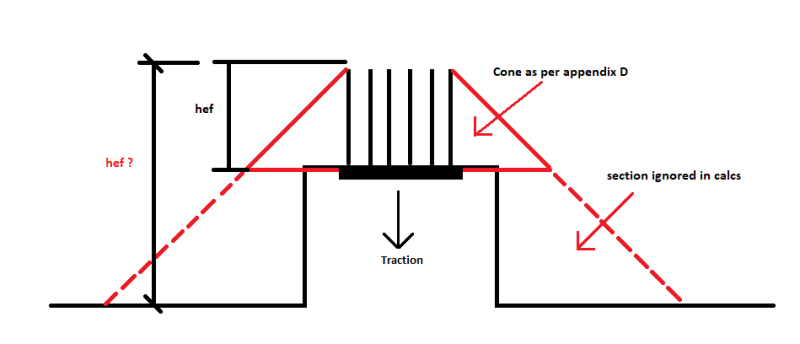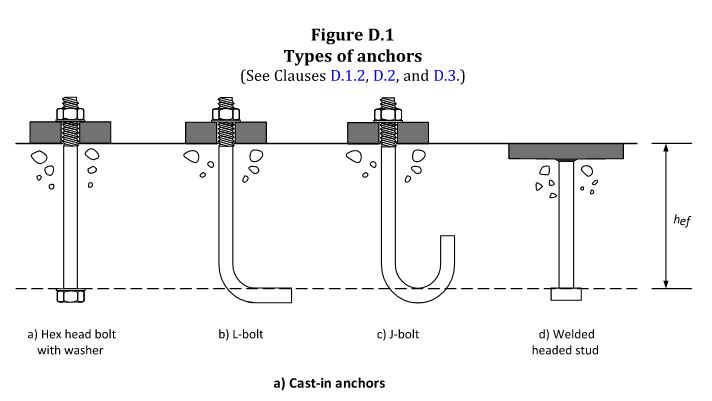Dam lover 68
Structural
- Sep 5, 2024
- 2
I have an unusual design to validate and was looking for some opinions on what can be considered as the usable area for concrete breakout in tension. In the situation where the anchors would be inside a reservation in the concrete would it be possible to consider a bigger breakout cone?
If the anchors are below the surface of the breakout "cone" could the top of concrete be considered for hef? Meaning top of concrete to bottom of anchors instead of top of anchors to bottom of anchors.


I am looking for some input as to why this would or would not be a thing.
Thanks
If the anchors are below the surface of the breakout "cone" could the top of concrete be considered for hef? Meaning top of concrete to bottom of anchors instead of top of anchors to bottom of anchors.


I am looking for some input as to why this would or would not be a thing.
Thanks
